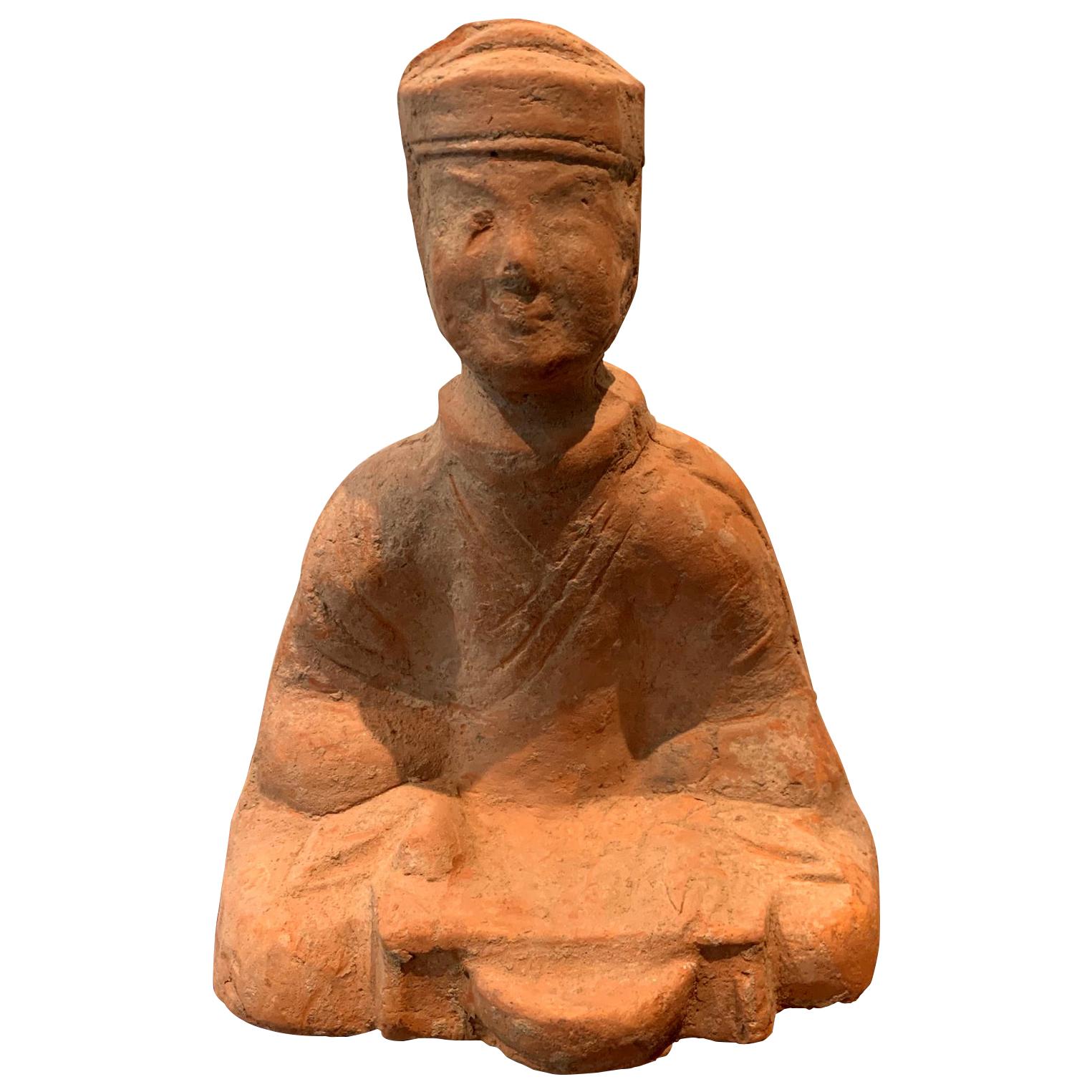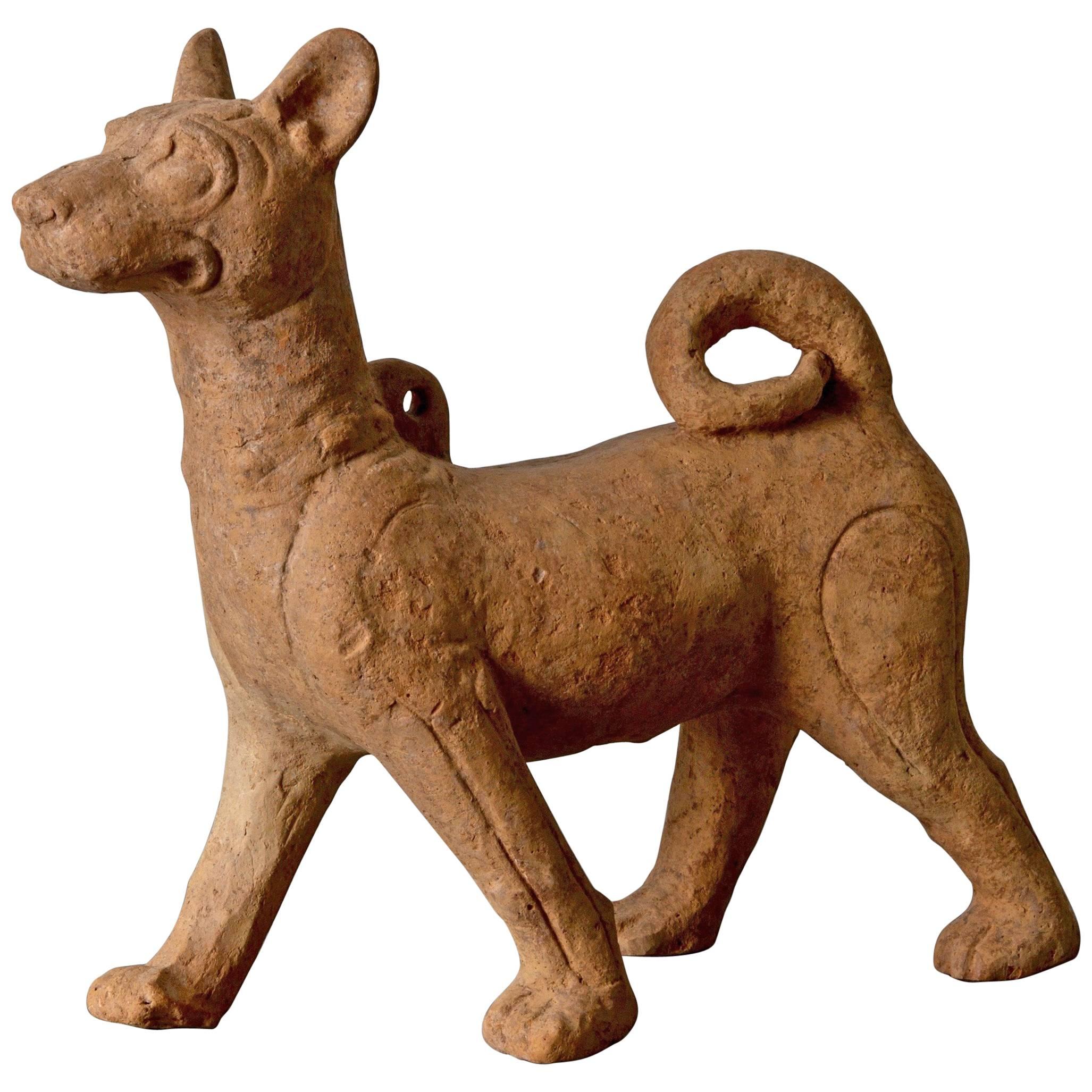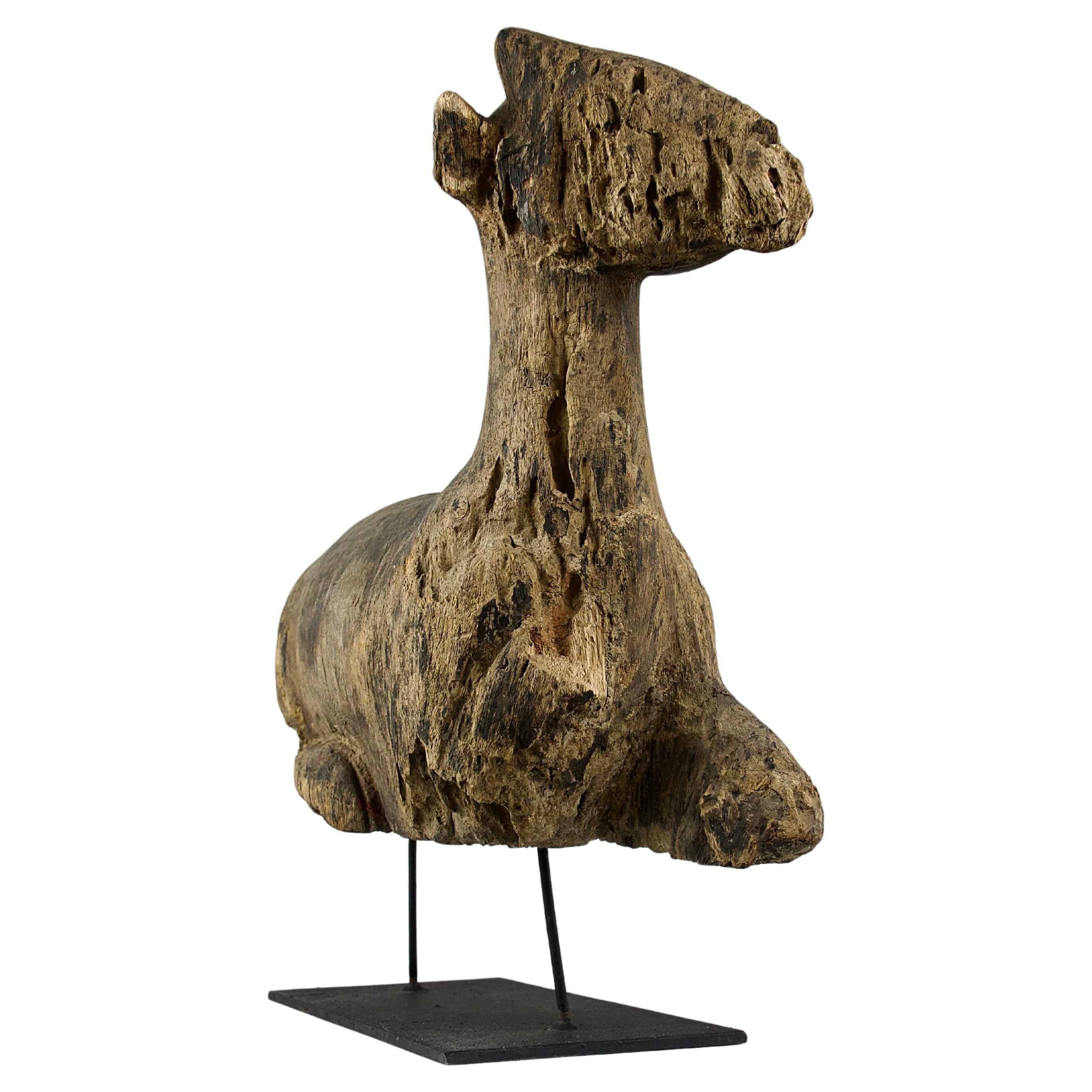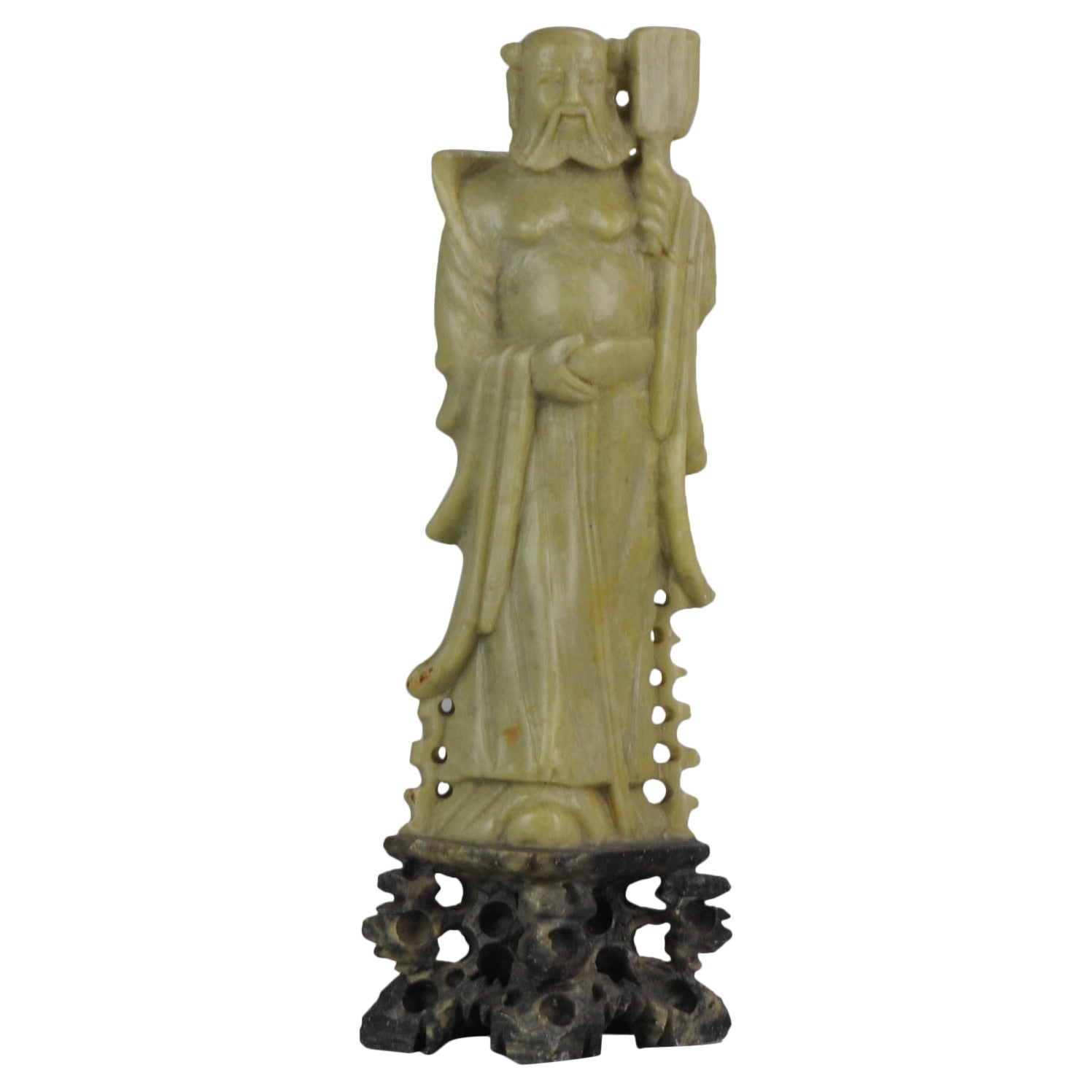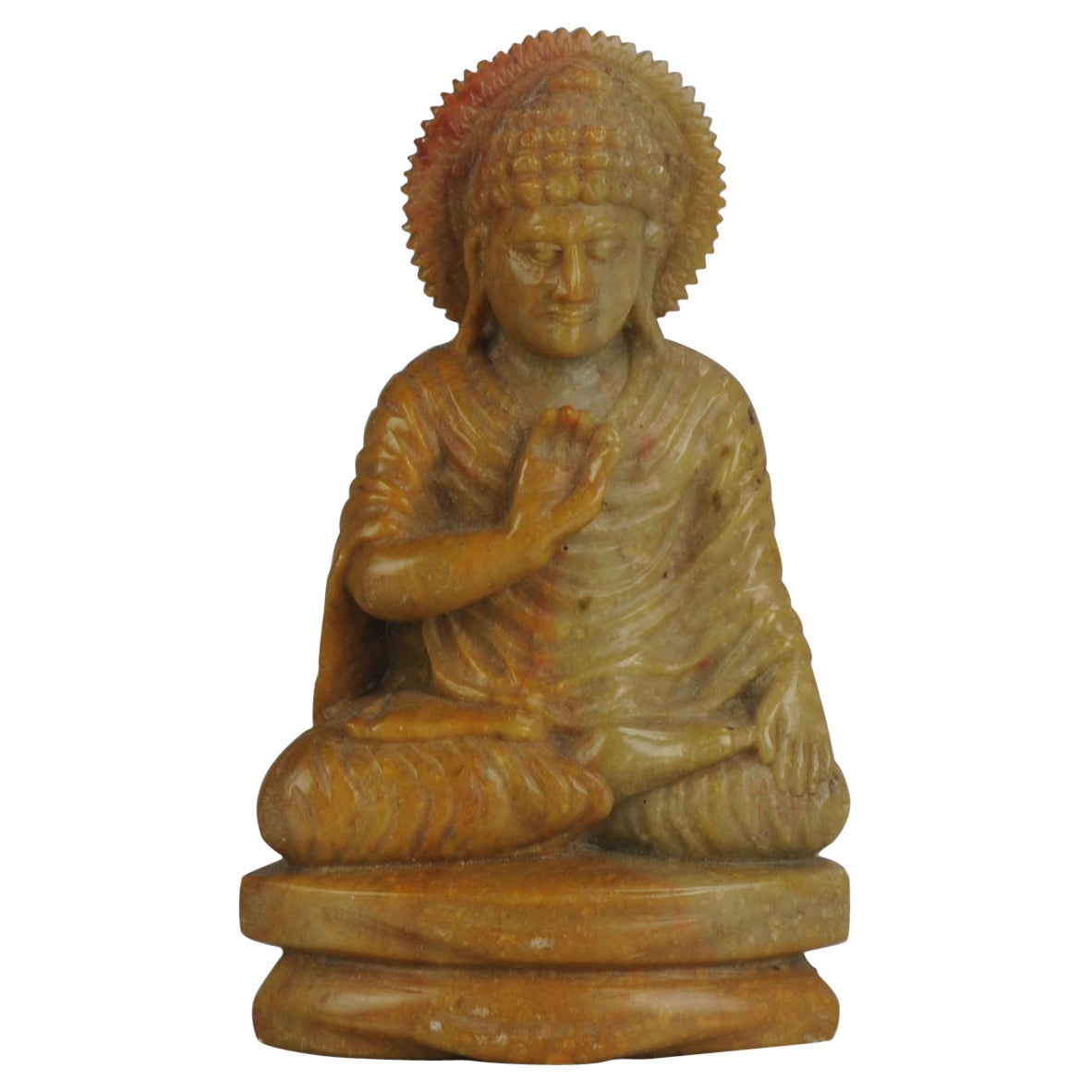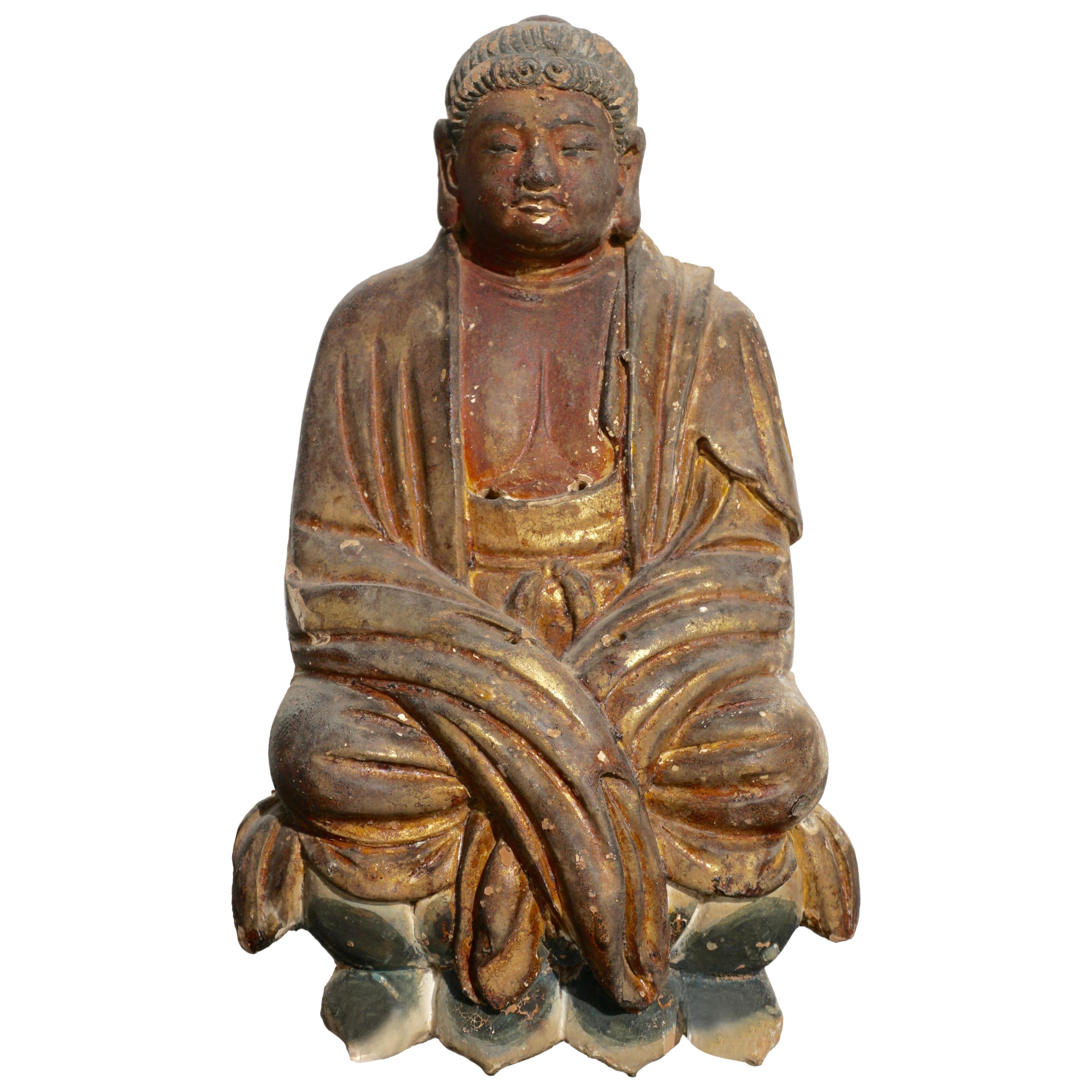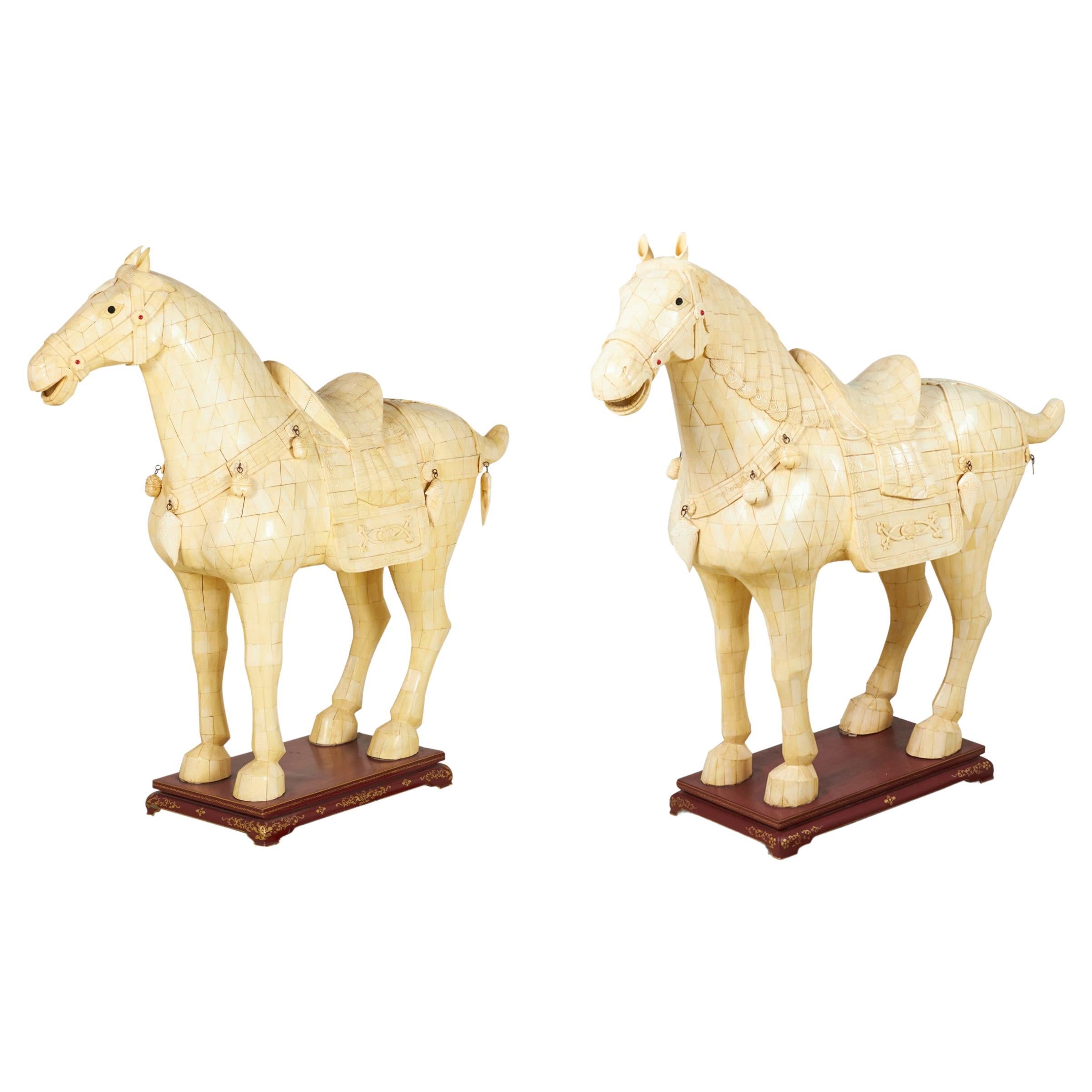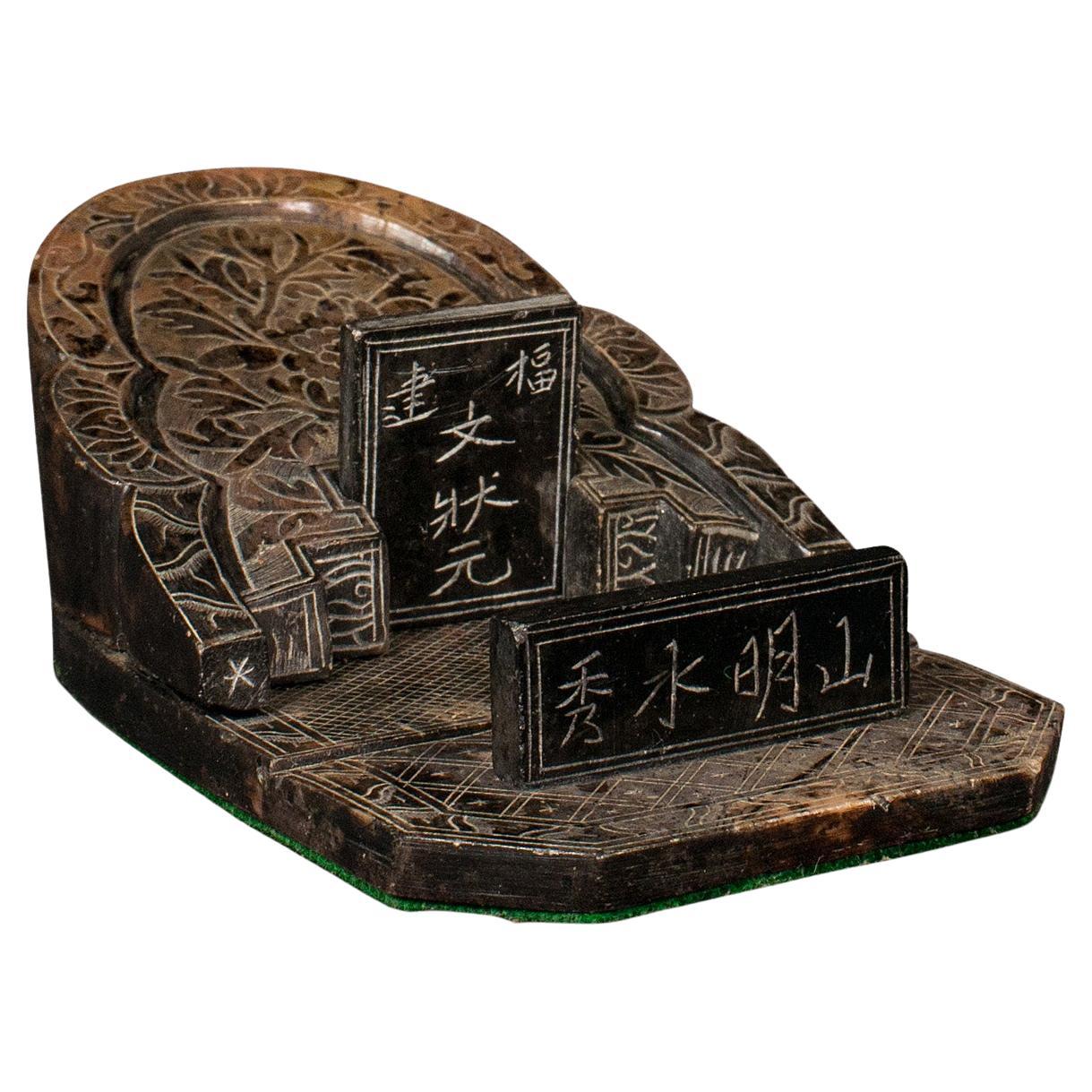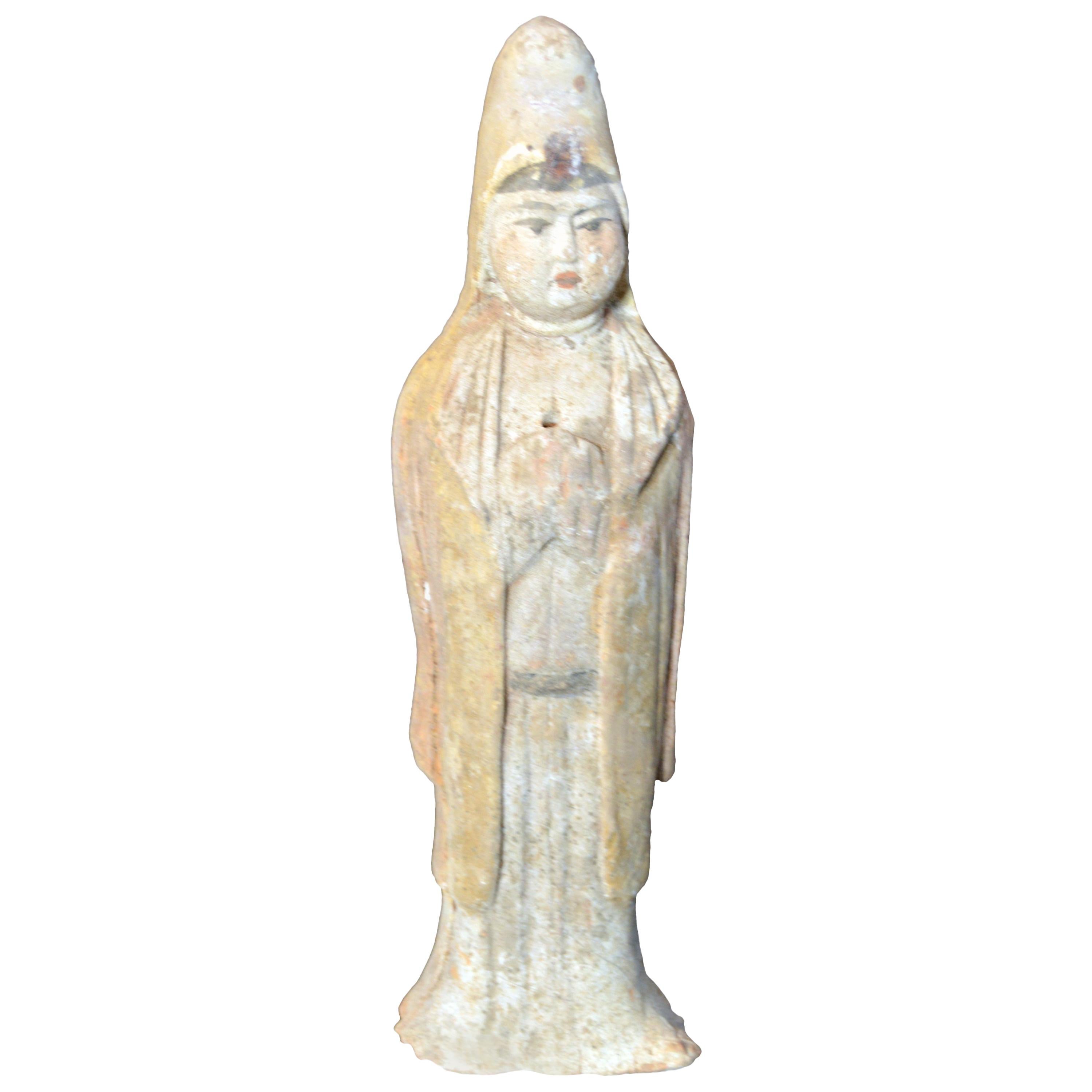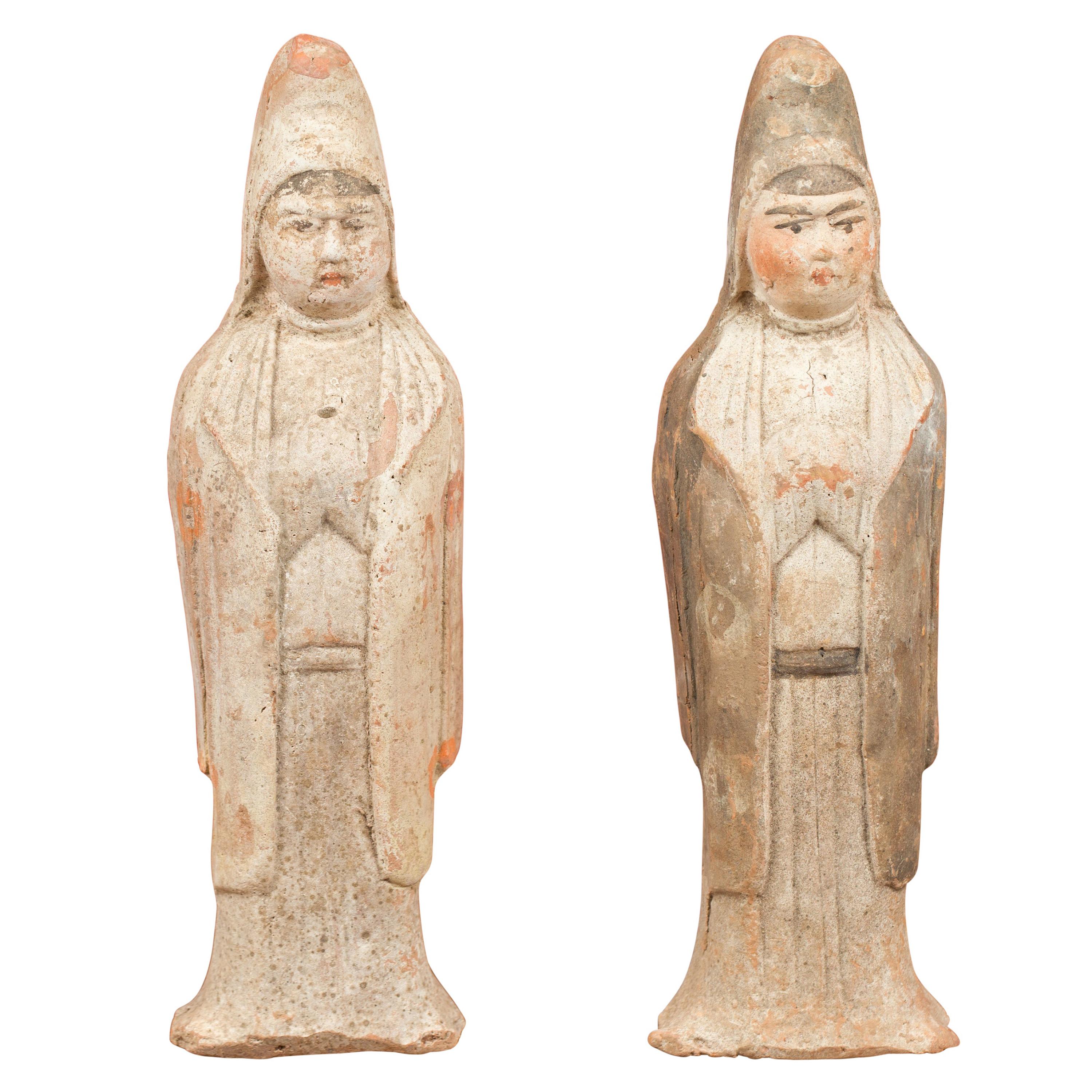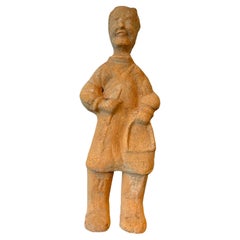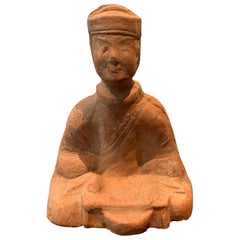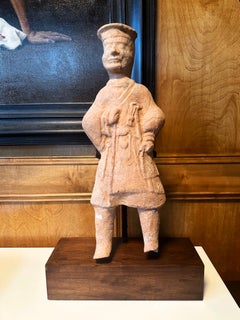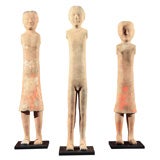
Chinese Han Dynasty Earthenware Burial Statues
View Similar Items
1 of 10
Chinese Han Dynasty Earthenware Burial Statues
About the Item
Weicheng Area, Shaanxi Province.
The figures are priced individually.
- Dimensions:Height: 23.5 in (59.69 cm)
- Sold As:Set of 3
- Materials and Techniques:
- Place of Origin:
- Period:
- Date of Manufacture:Han Dynasty (206 BC - 220 AD)
- Condition:The figures would have originally worn cloth robes which have since disintegrated. With restoration.
- Seller Location:Seattle, WA
- Reference Number:Seller: HA07002A B D1stDibs: 090420865720
You May Also Like
- Chinese Terracotta Statue Tomb Figure East Han DynastyLocated in Atlanta, GAA Chinese terracotta tomb figure (Ni Yong) from East Han Dynasty (25-220 AD), likely from the area of nowadays Sichuan. It depicts a horse groomer with tool and harness in hand. Dres...Category
Antique 15th Century and Earlier Chinese Archaistic Sculptures and Carvings
MaterialsClay
- Chinese Terracotta Tomb Figure East Han DynastyLocated in Atlanta, GAA small Chinese terracotta tomb figure (Ni Yong) from East Han dynasty (25-220 AD), likely from the area of nowadays Sichuan. It depicts a sitting male wit...Category
Antique 15th Century and Earlier Chinese Han Ceramics
MaterialsTerracotta
- Large Chinese Terracotta Tomb Figure East Han DynastyLocated in Atlanta, GAA Chinese terracotta tomb figure (Ni Yong) from East Han Dynasty (25-220 AD), likely from the area of nowadays Sichuan. It appears to depict a groom figure with attires and harness i...Category
Antique 15th Century and Earlier Chinese Han Sculptures
MaterialsTerracotta
- Sculpture Dog Sichuan Pottery Han Dynasty Period ChinaLocated in New York, NYSculpture Sichuan pottery walking Han dynasty period, China. A Han sculpture in the shape of a dog. Of the large number of figurines unearthed in burial sites in the city, pottery dogs are among the most unique. These marvelous animated tomb figurines...Category
Antique 15th Century and Earlier Chinese Han Animal Sculptures
MaterialsPottery
- Han Dynasty, Laying Doe Wood Sculpture, China 100ADLocated in PARIS, FRSuperb sculpture of a laying doe from the Chinese Han Dynasty (206BC-220AD). Remainders of polychromic paint, namely red, symbol of good fortune and joy as well as the season of summer, and green, symbol of vigor and vitality and the season of spring. Mounted on base. Condition seen in pictures. Dimensions in cm ( H x L x l ) : - Sculpture : 35 x 40 x 10 - With base : 45.5 x 44 x 15 The Han Dynasty ruled China from 206 B.C. to 220 A.D. and was the second imperial dynasty of China. It is known for its promotion of Confucianism as the state religion and opening the Silk Road trade route to Europe, permanently altering the course of Chinese history. Han Dynasty art and inventions like paper still influence the world today. From the Han Dynasty to the present, deer can be found in many materials and media—rock crystal, nephrite, ink on paper, porcelain, cloisonné enamel, jade, bamboo root, textile, bronze, etc.—alone or in groups, among trees and rocks and in various positions. They appear on everyday objects, from boxes to incense burners, incense holders, lamps, mirror holders and the droppers scholars used when they wrote. A symbol of longevity and grace in Chinese mythology, the word deer is pronounced lu, a homonym for emoluments—favors granted to officials. They therefore represent wealth, nobility and success in imperial examinations (civil service exams for selecting candidates for the state bureaucracy in Imperial China). Deer were the faithful companions of Shu Lao, the god of longevity, and the goddess Magu. They were reputed to live long and to be the only creature able to find the mushroom of immortality, linghzhi. Although its spots are different, deer are sometimes confused or associated with stags, a Manchu hunting trophy whose antlers served to make prestigious furniture. (La Gazette Drouot, Claire Papon) For the colours found on this piece, in Chinese culture, red symbolizes good fortune and joy. Green, symbolizes the spring when everything is brimming over with vigor and vitality. The Han Dynasty (206 B.C. to 220 A.D.) continued the Qin Dynasty’s use of dark colours, but incorporated red. During the earlier years, or Western Han Dynasty, ordinary people wore red while court dress was black. Shoes were red in color. The clothing worn for sacrificial rites was black edged with red. In the later Eastern Han Dynasty, red symbolized the dynasty’s “fire Virtue” and became predominant. Court dress was red. Sacrificial rites called for a red-edged white layer under robes with red socks...Category
Antique 15th Century and Earlier Chinese Han Mounted Objects
MaterialsWood
- Lovely Qing Dynasty Chinese Soapstone Statue Nicely Carved Wise ManLocated in Amsterdam, Noord HollandLovely Chinese Statue. The artist really did it's best on this one. Additional information: Material: Soapstone Type: Statues Region of Origin: China Period: ca 1900 Qing (1661 - 1...Category
Antique 19th Century Chinese Figurative Sculptures
MaterialsSoapstone
$610 Sale Price20% Off

